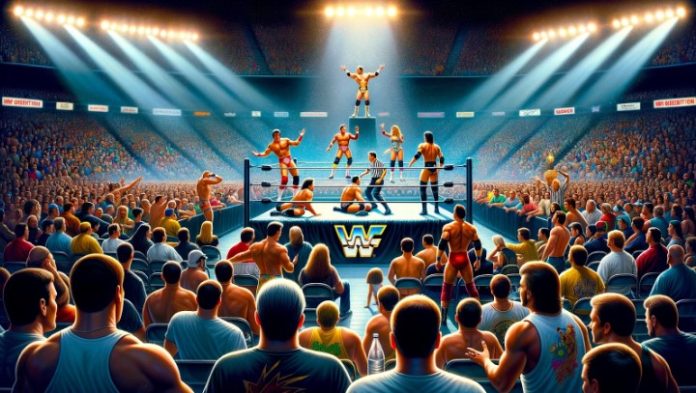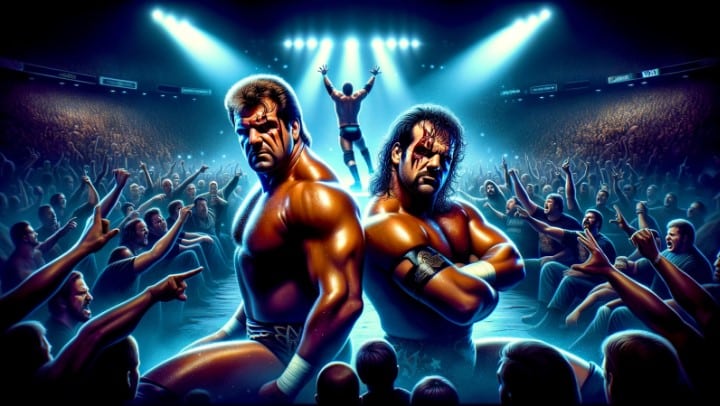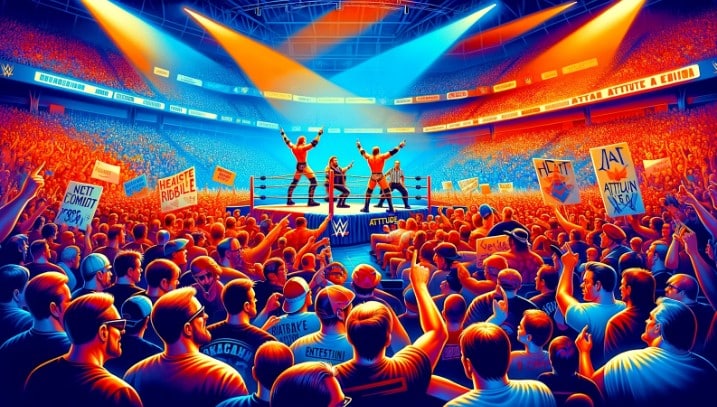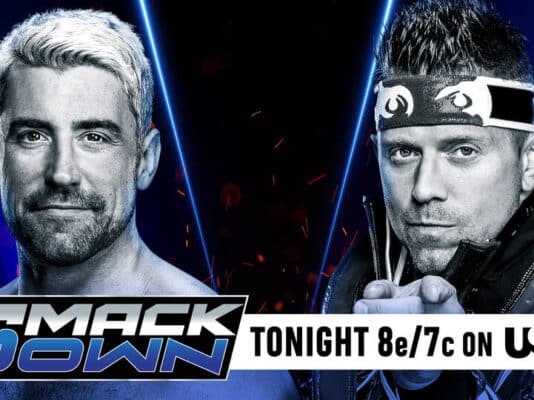
The landscape of professional wrestling has undergone several seismic shifts over the decades, with two particularly notable periods standing out: the New Generation Era and the Attitude Era. These epochs in the WWE (formerly WWF) universe not only defined the childhood and adolescence of countless fans around the globe but also set benchmarks in storytelling, in-ring performance, and mainstream crossover appeal. As we delve into this comparison, it’s worth noting the significant role sports betting has played in adding an extra layer of excitement to wrestling. Platforms like 1 xbet offer fans the chance to engage with the sport in a more interactive manner, heightening the thrill of every match.
The New Generation Era: A Foundation of Talent
Unveiling the Superstars
In the early 1990s, the WWE embarked on a new direction. The era was characterized by a shift towards younger talent, with the company placing its future in the hands of stars like Bret “The Hitman” Hart, Shawn Michaels, and The Undertaker. This period laid the groundwork for the future of professional wrestling, emphasizing technical skill and compelling narratives.
- Bret Hart: The Excellence of Execution
- Shawn Michaels: The Showstopper
- The Undertaker: The Phenom
Key Characteristics
The New Generation Era is remembered for its emphasis on in-ring ability and storytelling. It was a period where the athleticism and wrestling prowess of its performers were highlighted, creating a stark contrast to the larger-than-life characters of the 1980s.
The Attitude Era: Breaking the Mold
The Icons Emerge
As the late ’90s rolled around, the Attitude Era was born out of a necessity for innovation and a response to stiff competition from WCW. This era saw the emergence of edgier, more complex characters like Stone Cold Steve Austin, The Rock, and Mankind. It was defined by its “anything goes” mentality, which resonated deeply with the audience.
- Stone Cold Steve Austin: The Texas Rattlesnake
- The Rock: The People’s Champion
- Mankind: The Deranged Genius
Transformative Storytelling
The Attitude Era pushed the boundaries of what was acceptable on mainstream television, with storylines that were more adult-oriented and often controversial. This era embraced a more is more philosophy, with shocking moments and a blurring of the lines between reality and scripted entertainment.
Head-to-Head Comparison
When comparing the New Generation and Attitude Eras, it’s crucial to examine their impact on the wrestling world and popular culture.
In-Ring Performance
- New Generation: Focused on technical prowess and athleticism.
- Attitude Era: Emphasized entertainment and shock value, though it also had its fair share of exceptional matches.
Storytelling
- New Generation: More traditional, hero vs. villain narratives.
- Attitude Era: Complex, often adult-themed storylines with anti-heroes and blurred lines of morality.
Cultural Impact
- New Generation: Laid the groundwork for modern wrestling, though it struggled with mainstream appeal.
- Attitude Era: Propelled wrestling into the mainstream consciousness, making household names of its stars.
Legacy and Influence
The New Generation Era, while often overshadowed by the flashier Attitude Era, established the foundation upon which the latter would build. It’s a testament to the enduring nature of wrestling’s ability to evolve and adapt to the tastes of its audience.
The Attitude Era, on the other hand, changed the game entirely. It showed that wrestling could be a form of entertainment that appealed not just to children or hardcore fans, but to the general public. The risks taken during this time paid off in ratings, pay-per-view buys, and the global expansion of the WWE brand.
Conclusion
The debate between the New Generation and Attitude Eras is more than just a comparison of two periods in wrestling history. It’s a reflection on how the sport has the unique ability to reinvent itself and resonate with audiences across different generations. Each era brought something invaluable to the table, shaping the landscape of professional wrestling in ways that are still felt today.
As we look back on these iconic times, we’re reminded of the sheer unpredictability and excitement that professional wrestling offers. It’s a world where athletes and storytellers come together to create moments that live forever in the hearts of fans. In many ways, the legacy of these eras is not just in the matches or the characters but in the lasting impact they’ve had on entertainment as a whole.














